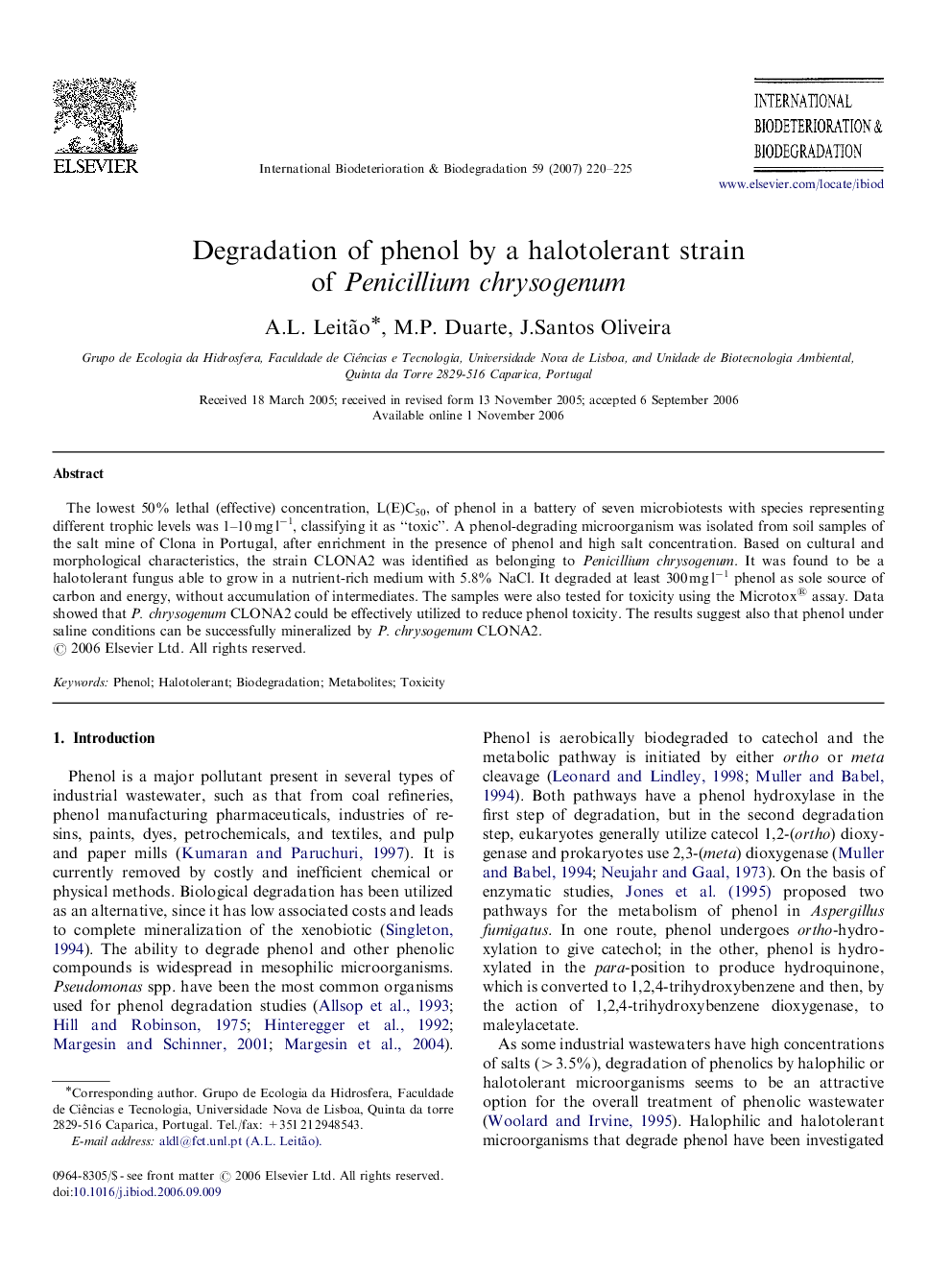| کد مقاله | کد نشریه | سال انتشار | مقاله انگلیسی | نسخه تمام متن |
|---|---|---|---|---|
| 4365710 | 1301773 | 2007 | 6 صفحه PDF | دانلود رایگان |

The lowest 50% lethal (effective) concentration, L(E)C50, of phenol in a battery of seven microbiotests with species representing different trophic levels was 1–10 mg l−1, classifying it as “toxic”. A phenol-degrading microorganism was isolated from soil samples of the salt mine of Clona in Portugal, after enrichment in the presence of phenol and high salt concentration. Based on cultural and morphological characteristics, the strain CLONA2 was identified as belonging to Penicillium chrysogenum. It was found to be a halotolerant fungus able to grow in a nutrient-rich medium with 5.8% NaCl. It degraded at least 300 mg l−1 phenol as sole source of carbon and energy, without accumulation of intermediates. The samples were also tested for toxicity using the Microtox® assay. Data showed that P. chrysogenum CLONA2 could be effectively utilized to reduce phenol toxicity. The results suggest also that phenol under saline conditions can be successfully mineralized by P. chrysogenum CLONA2.
Journal: International Biodeterioration & Biodegradation - Volume 59, Issue 3, April 2007, Pages 220–225